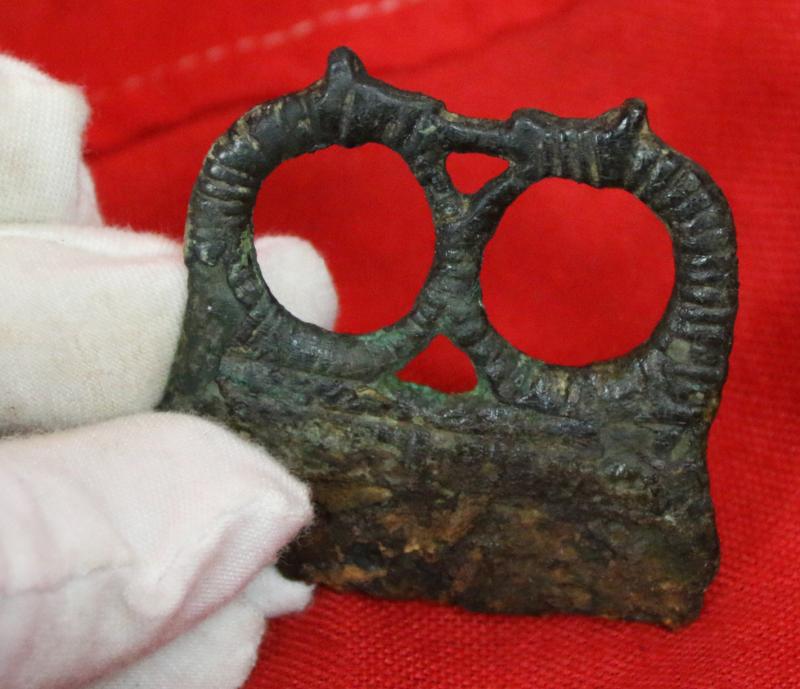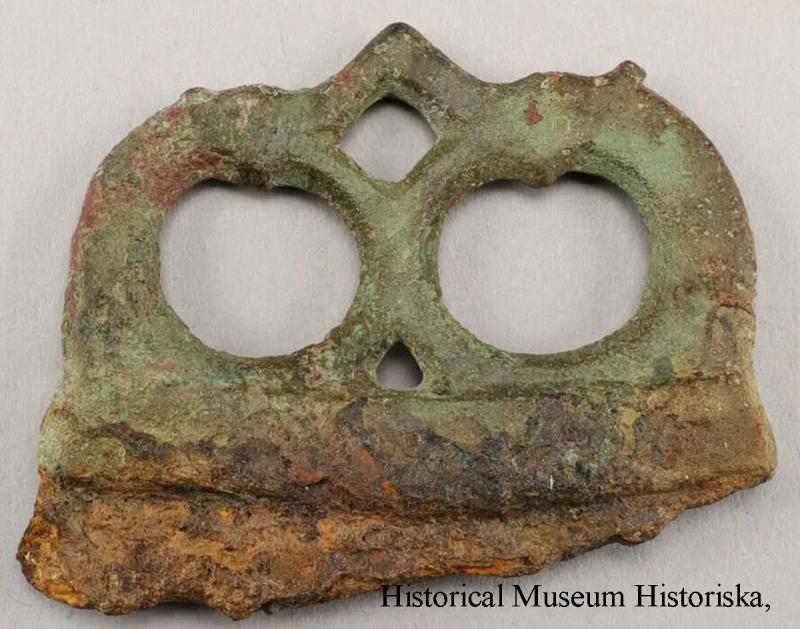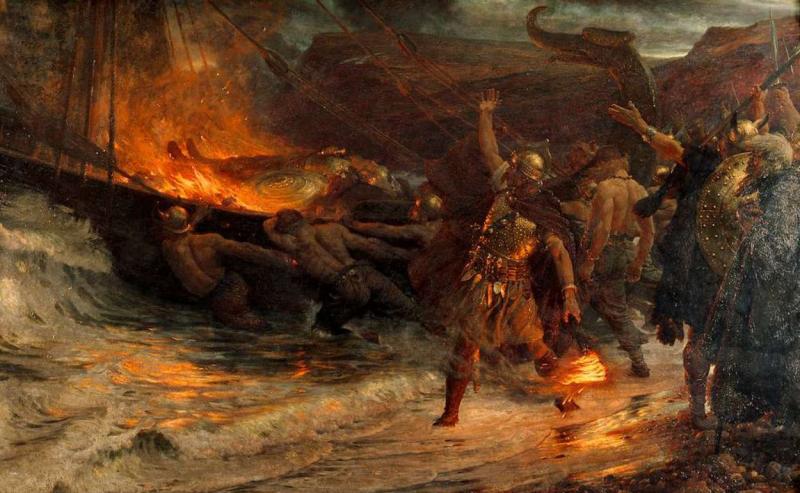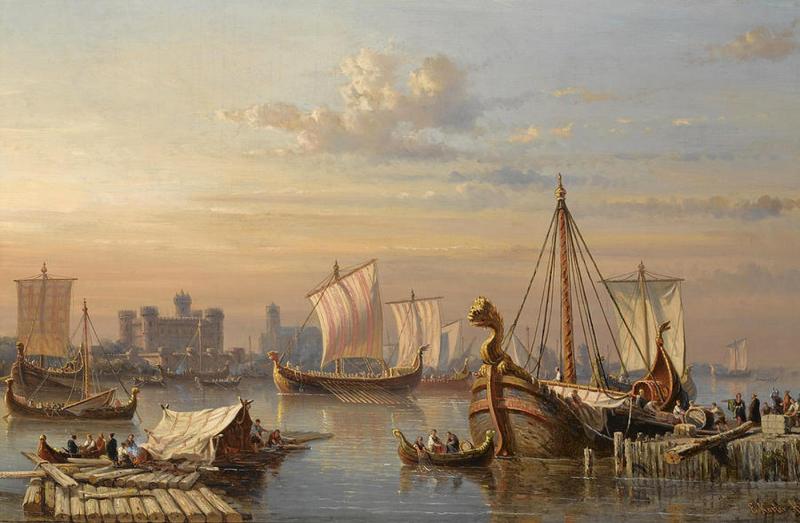Very Rare Ancient Dragon-Head Viking Fire-Starter, A 'Drepa Upp Eld'. Twin Interlinked Dragon Creating Finger Loops & Steel Striking Blade. Used With Amadou Touchwood Fungus {Fomes Fomentarius}. To Make Fire At Sea Sailing In a Viking Long Boat
Around 1100 years old.
The only other known example of this rarest type of Viking bronze and steel striker, is a specimen from a Chamber Tomb found in in Ekka, Birka, in Uppland. See a photo in the gallery of that example from the Historical Museum Historiska, Photo taken by Camilla Hällbrink, that one is also likely from second half of the 10th century. Museum item number 458255_HST.
How often is it one can own, a rarest original Viking artifact, that apparently, according to the national historical museum of Sweden, its only known similar surviving example is in that same museum in Sweden. Our example is of superior quality, and in much better condition. There are other styles that have been found, also in museums, but this is the rarest type.
Twin Viking Dragon Draken heads with open mouths, meeting at the apex, with long, scaled skin necks in circular loops with the tails being swallowed by the open mouths. Mounted holding a long steel striker blade. Like the ancient symbol of the snake swallowing its tail, it is said to represent 'infinity' and permanence.
Fire-Starting Using Flint and Steel. The term in Old Norse for percussion fire-making is drepa upp eld, from the verb drepa, "to strike, beat, knock; to produce by a blow or blows", thus drepa upp eld is "to strike up a fire." True flint and steel fire starting is a low temperature method of spark-based fire starting.
The Vikings, renowned for their seafaring prowess and ingenuity, utilized a unique method for creating fire that involved a specific type of fungus and urine. They employed the touchwood fungus, also known as Amadou (Fomes fomentarius), which grows primarily on birch and beech trees. This fungus, when processed correctly, becomes highly flammable. The Vikings would boil the fungus for several days, then soak it in human urine. The urine contains nitrates, which, when absorbed by the fungus, significantly enhance its ability to catch and sustain a flame.
After the fungus had soaked long enough to absorb sufficient nitrates, it was dried and pounded into a soft, fibrous material. This prepared fungus could then be easily ignited with a spark, making it an excellent tinder for starting fires in harsh and damp conditions. This innovative use of natural resources showcases the Vikings' deep understanding of their environment and their resourcefulness in overcoming the challenges posed by their often cold and wet climate. Their ability to produce reliable fire under adverse conditions, such as in violent stormy seas, was crucial for survival, navigation, and their various activities, including cooking and metalworking.
Every Viking torch lit march had to use exactly such a device to create the flame, every camp fire and every flaming arrow needed exactly this amazing piece of Viking history.
In the gallery are two 19th century paintings by
Everhardus Koster
& Frank Dicksee 1893
Hällbrink, Camilla, Historical Museum
Location: Björkö, North of Borg, Ancient monument: L2017:1478, Parish: Adelsö parish, Municipality: Ekerö municipality, Region: Uppland, Country: Sweden 1878
Code: 25814
1250.00 GBP







